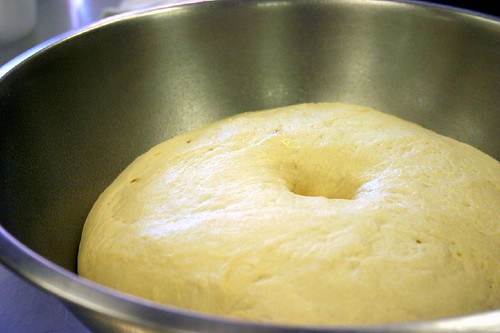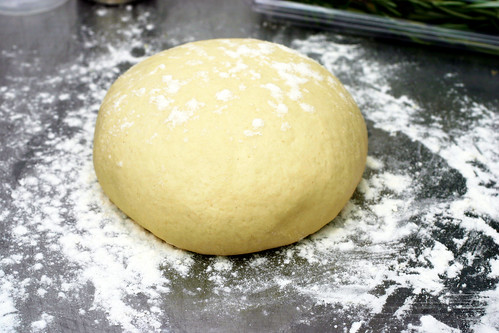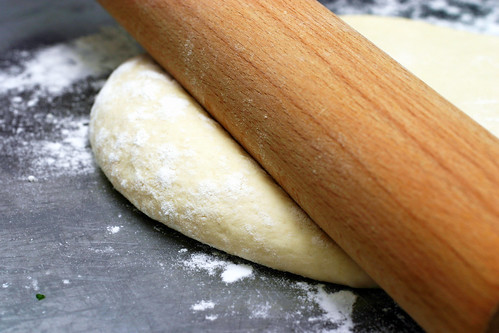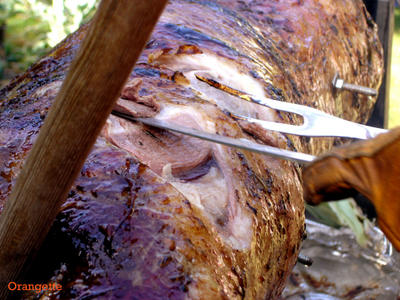 |
| How toprepare a delicious omelet |
The first thing we need are the ingredients: potatoes, eggs, onion, salt and oil. We must use good ingredients, potatoes should be soft and mealy pietas never, fresh eggs and if they are better corral, good soft onions and olive oil.
We have to take a good pan with nonstick in good condition so that we are not sticking, advice is only use it to make tortillas and fried eggs. A handy trick you can use if you do not have a good pan so that you will not stick omelet is to cover the bottom of the pan with salt, then fry until it turns brown lightly, then we remove the salt with paper towel or cloth and you can already use the pan without the risk of food sticking to you.
The whole process of development is done by eye and is almost impossible to make an omelet with exact amounts. The important thing is that the ratio of the ingredients is correct. A rule that you can use if you like curd is: per potato the size of a fist and put an egg if you like very juicy for every 3 potatoes put 4 eggs or 5 if they are small. It is always better if in doubt put a sin egg rather than less.
DEVELOPMENT
First we peel and cut potatoes, some people prefer to cut them into thin slices and diced other important thing is that they all have a similar size to that take the same time in the making. Once cut we take good handful of salt and put them in hot oil.
Now cut the onion into pieces not too small, the amount of onion is in taste, from those who do not like and do not put or put a tiny onion, even those who like a lot and put one or two onions omelet depending on size onions and potato omelet, you have to try to come up with the formula that you like. Not to cry when cutting an effective trick is to do under the extractor fan on or in a drafty place, try it see how it works.
It's time to fry the potatoes in plenty of hot oil. The oneness must be between fried and boiled, fried almost but not quite crisp. So do not run the risk of being left raw and all the oil will drain better. When almost cooked potato onion will miss with three minutes is sufficient to list, but here also each master has his own little trick and many with the fried potato from the start.
While the potatoes are fried can go whisking eggs in a bowl and add to these a pinch of salt. To come out very moist separate the yolks from the whites and assemble these until stiff, we can also add a teaspoon of yeast and get the same effect. If we want to be juicier will add a splash of cold milk.
When the potatoes are ready drain them oil well to leave no oily and threw in the well beaten eggs and let the mixture sit 10 minutes and get the potato to soak and acquire the right consistency. The egg must cover the potatoes and onions.
Now put a tablespoon of oil in the well clean pan and when hot pour the mixture and let it do 1 or 2 minutes depending on whether we like it more or less curd.
We also need to have on hand a plate with which we will turn over the omelet and this should always be larger than the pan to avoid problems at the time to give it back and so afraid, we must make a quick and safe movement firmly and decisively. We put it on the pan and held him tightly with one hand while you use the other to turn it around by grabbing the handle. Now we just need to return the tortilla in the skillet to be finished curdle on the other side. This will take us 1 or 2 minutes if you like juicy and 2 or 3 minutes if we like curd. We spent the tables on a clean plate and Ready!
With these little tricks will get to enjoy a tasty omelet, now you just have to practice. And if you want to savor a rich omelet at any time without any effort be sure to try our delicious omelets.

























 I arrived a little after one with an armload of my own, balancing a tourte de
I arrived a little after one with an armload of my own, balancing a tourte de  With
the smell of so much meat in the air, it wouldn’t be quiet for long.
Guests trickled in, bearing swim suits and bowls full of food, and while
Briquette bronzed, they worked up an appetite in the lake, splashing
around on surfboards and in sailboats. Meanwhile, I whet my own with a
few sips of ouzo—and began planting the seeds for a slow but steady movement toward the groaning buffet tables.
With
the smell of so much meat in the air, it wouldn’t be quiet for long.
Guests trickled in, bearing swim suits and bowls full of food, and while
Briquette bronzed, they worked up an appetite in the lake, splashing
around on surfboards and in sailboats. Meanwhile, I whet my own with a
few sips of ouzo—and began planting the seeds for a slow but steady movement toward the groaning buffet tables. 

 there,
balancing paper plates on our knees and fending off the chickens, who’d
been, much to their delight, liberated from the hen house to root in
the loose dirt of the garden. And there was more ouzo, and soon that
happy stupor that follows anticipation. There’s a strange,
delicious limbo zone one enters after this kind of feasting, when the
mind and the senses are both quieted and sharpened, slow but nimble.
there,
balancing paper plates on our knees and fending off the chickens, who’d
been, much to their delight, liberated from the hen house to root in
the loose dirt of the garden. And there was more ouzo, and soon that
happy stupor that follows anticipation. There’s a strange,
delicious limbo zone one enters after this kind of feasting, when the
mind and the senses are both quieted and sharpened, slow but nimble.
 Put
a pizza stone on the middle rack of the oven, and preheat the oven to
425 degrees Fahrenheit. Roll the puff pastry out on a floured surface to
a large, 1/16”-thick round. Fit the pastry into a removable bottom tart
pan (the original recipe calls for an 11” pan, but I used a 9” with no
problems), and trim the edges. Prick the pastry all over with a fork;
cover it with plastic wrap; and chill it for 30 minutes.
Put
a pizza stone on the middle rack of the oven, and preheat the oven to
425 degrees Fahrenheit. Roll the puff pastry out on a floured surface to
a large, 1/16”-thick round. Fit the pastry into a removable bottom tart
pan (the original recipe calls for an 11” pan, but I used a 9” with no
problems), and trim the edges. Prick the pastry all over with a fork;
cover it with plastic wrap; and chill it for 30 minutes. 













